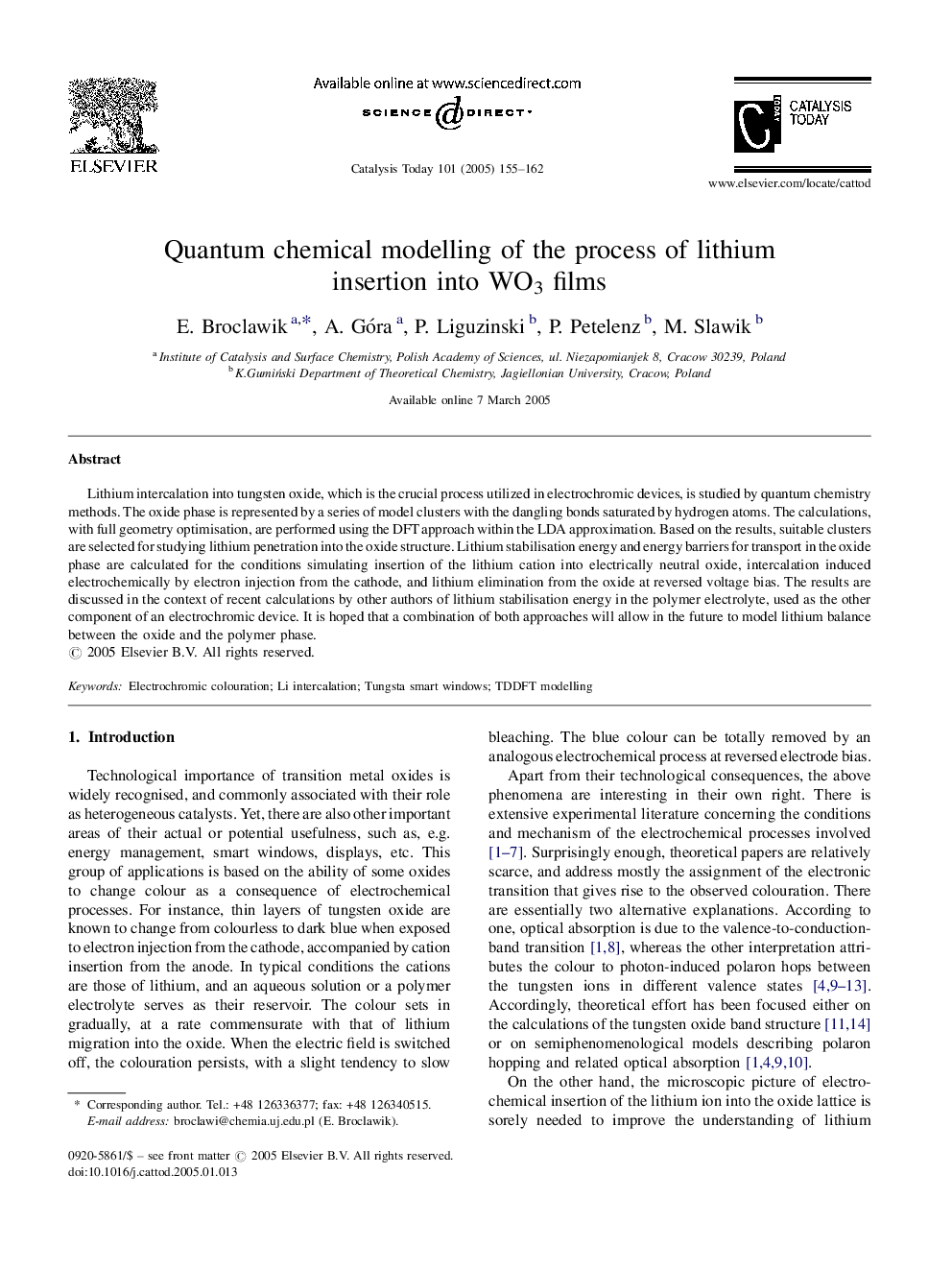| Article ID | Journal | Published Year | Pages | File Type |
|---|---|---|---|---|
| 10243959 | Catalysis Today | 2005 | 8 Pages |
Abstract
Lithium intercalation into tungsten oxide, which is the crucial process utilized in electrochromic devices, is studied by quantum chemistry methods. The oxide phase is represented by a series of model clusters with the dangling bonds saturated by hydrogen atoms. The calculations, with full geometry optimisation, are performed using the DFT approach within the LDA approximation. Based on the results, suitable clusters are selected for studying lithium penetration into the oxide structure. Lithium stabilisation energy and energy barriers for transport in the oxide phase are calculated for the conditions simulating insertion of the lithium cation into electrically neutral oxide, intercalation induced electrochemically by electron injection from the cathode, and lithium elimination from the oxide at reversed voltage bias. The results are discussed in the context of recent calculations by other authors of lithium stabilisation energy in the polymer electrolyte, used as the other component of an electrochromic device. It is hoped that a combination of both approaches will allow in the future to model lithium balance between the oxide and the polymer phase.
Keywords
Related Topics
Physical Sciences and Engineering
Chemical Engineering
Catalysis
Authors
E. Broclawik, A. Góra, P. Liguzinski, P. Petelenz, M. Slawik,
